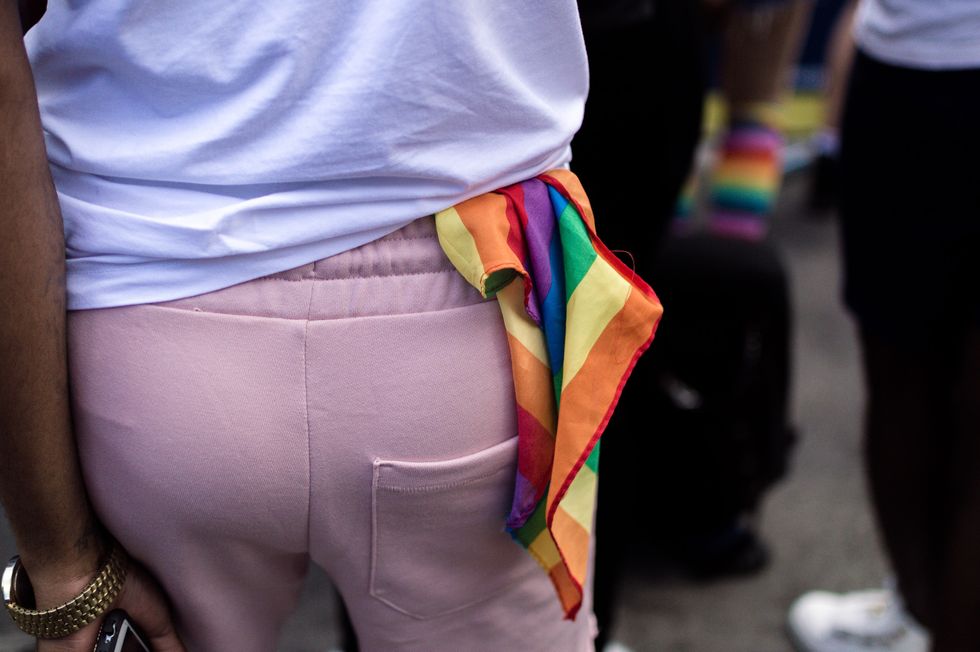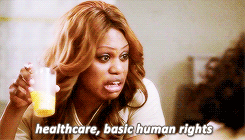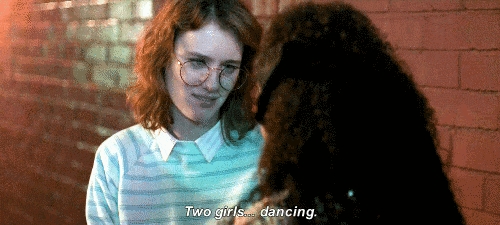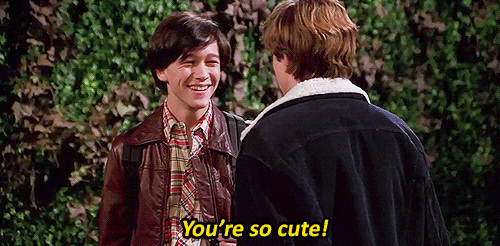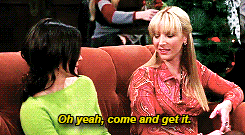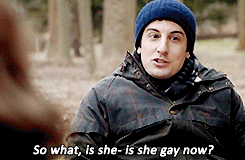As with all minority representation, LGBT characters on TV can either be great or completely miss the mark.
The Good
1. Sophia Burset in Orange Is The New Black
A lot of writers want to take the confidence out of lesbians, forcing the trope that LGBT people are ashamed or in a constant closet. Arizona challenged this. She was proud of her sexuality. Callie and Arizona were an amazing couple during Grey's Anatomy, bringing lesbian relationships into a mainstream broadcasting light.
2. Arizona Robbins in Grey's Anatomy
Arizona is the kind of lesbian TV character the LGBT community needs. She has confidence in her sexuality, never trying to hide it or feeling ashamed of it. Her and Callie's relationship has so much more depth than just being a token gay couple.
3. Kelly and Yorkie in Black Mirror
Not many shows can successfully embrace dynamic same-sex relationships in television without focusing only on their sexuality. Kelly and Yorkie are a bisexual and lesbian couple experiencing the fictional world of San Junipero. The two are great on their own and together, both with characterization outside of their label as a queer, interracial couple. They are a genuine representation, and not stereotypical.
The Bad
(disclaimer: I will be using this section to talk about characters who missed the mark a bit, but aren't necessarily bad representation).
1. Remy "Thirteen" Hadley in House
On one hand, Hadley has a complete personality and plotline outside of her sexuality. Writers of House embrace this part of her without focusing only on the fact that she is bisexual in the majority of scenes. Even yet, the show still displays bisexuality as taboo. Including LGBT characters in mainstream television should not follow a heteronormative trope of “anything other than straight is bad”, which House airs on the side of by treating her sexuality as a dirty little secret.
2. Buddy in That 70's Show
In a list of gay moments on TV, this episode of That 70’s show can’t go unmentioned. The kiss between Eric and Buddy was the first kiss broadcasted in North America between two men. Progress is great! However, it does not necessarily handle the situation perfectly. The reactions to this episode were split; some loved the way Eric eventually came around to be alright with what happened, while some were disgusted about the “gay panic” moment, and the group’s reaction to realizing someone in their community was gay. Buddy is treated as less of a character due to his sexuality, and more of something to point at. Misunderstanding the situation, and being rejected by his crush, leads him to be the punchline of a joke laughed at by the audience.
3. Phoebe in Friends
Although never really confirmed, there are several hints that Phoebe may be bisexual. This never is talked about blatantly. The writers of Friends brushed Phoebe’s possible bisexuality under the rug, never mentioning it as a confirmed aspect of her character. A proud LGBT main character on such a popular television would have been a great form of representation, an opportunity completely missed.The Ugly
1. Piper in Orange Is The New Black
Piper’s sexuality is something of an odd attempt at bisexual representation. Despite the show’s embracement of gay, trans, and gender fluid characters, the idea of bisexuality is treated as an afterthought. Instead of recognizing her sexuality as a fluid attraction to both genders, it is mainly described with her family and husband Larry as a switch, including the quote “is she gay now?” as the best attempt at mentioning her sexuality. This incorporates the “bisexuality isn’t a valid identity” trope that should have been squashed in such a progressive television series.
2. Mitch and Cam in Modern Family
This one is little more controversial, due to Modern Family's minority representation in mainstream television including racial, ethnic, and sexual diversity. Writers take precaution as to make sure nothing associated with them is offensive to anyone, or at least in the case, to straight viewers. Despite the admirable attempt at representation, these two characters perpetuate stereotypes associated with the gay male community. If the show is so focused on being modern and progressive, why do they use stereotypes to power an attempt at visibility? Not to mention the controversy behind the length it took to see a kiss between the two. Giving your gay characters non-stereotypical traits should not be a difficult challenge. If your version of representation includes dumbing down a couple to be accepted by a straight community, it is not the perfect way of doing it.
3. Kurt in Glee
Ok, let me be clear about this before an entire fandom hates me. I don’t mean to attack Kurt’s character; he is a great representation of the LGBT community. However, I included him on this list for his stated view on bisexuality. In one episode, he claims “bisexual is a term that gay guys in high school use when they wanna hold hands with girls and feel normal”. Not only is this completely untrue, but it also may make bi men feel invalidated in their own sexuality. This thinking pressures bisexuals into feeling as if they need to "choose a side" in order to feel valid.The show has a history of missing the mark on bisexual representation, as seen in the young bi girl Brittany, whose sexuality is only ever defined as “fluid” or “bi-curious”.

